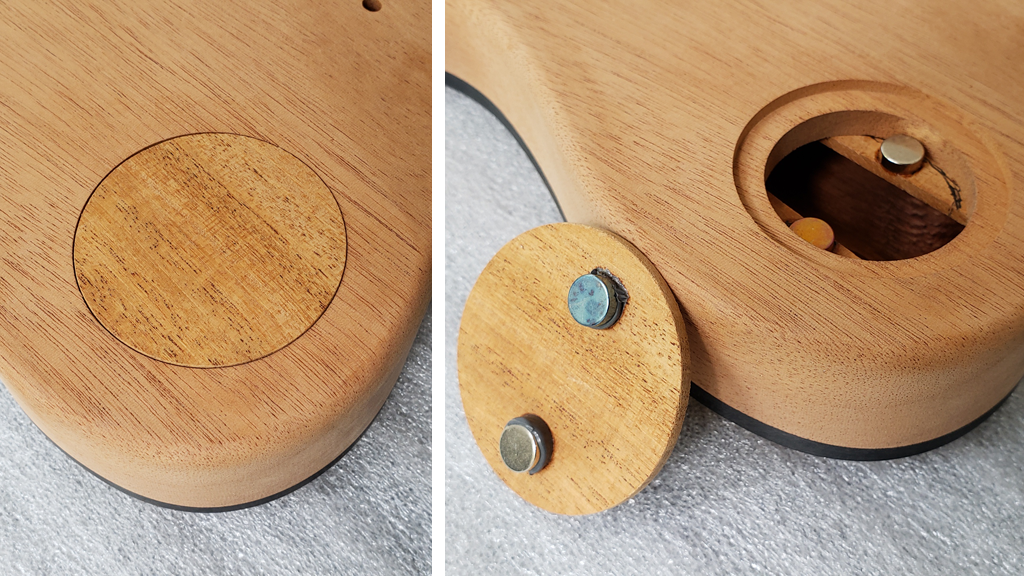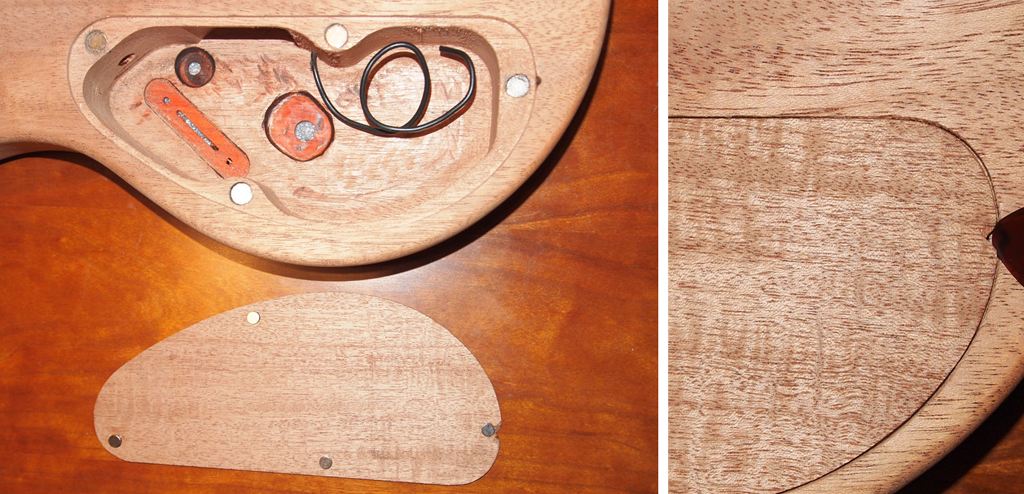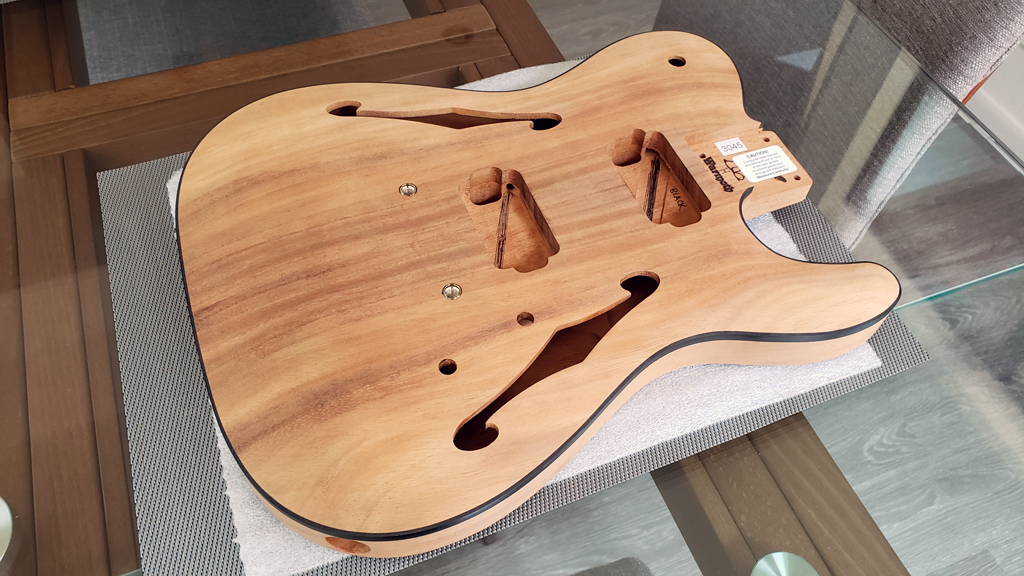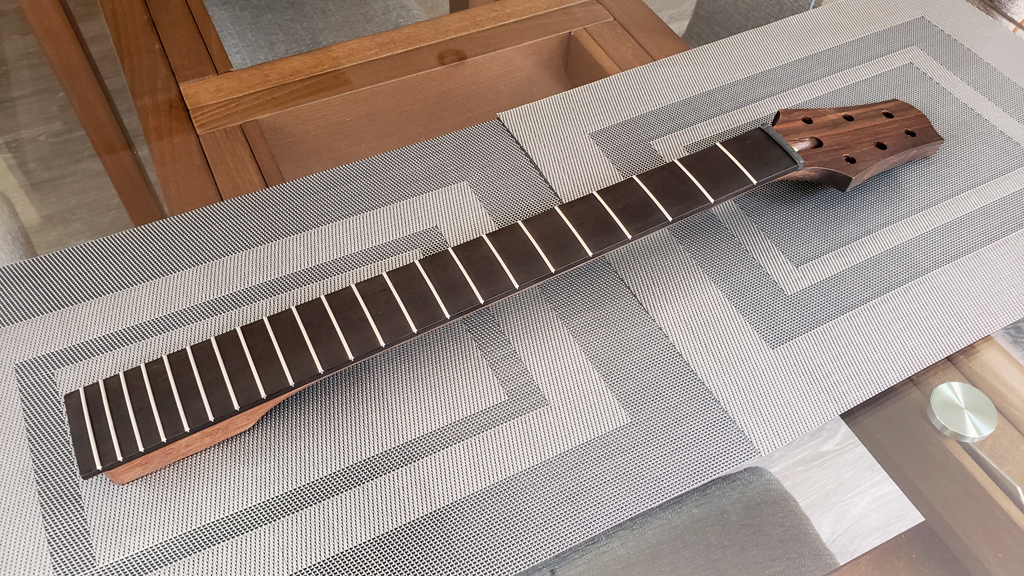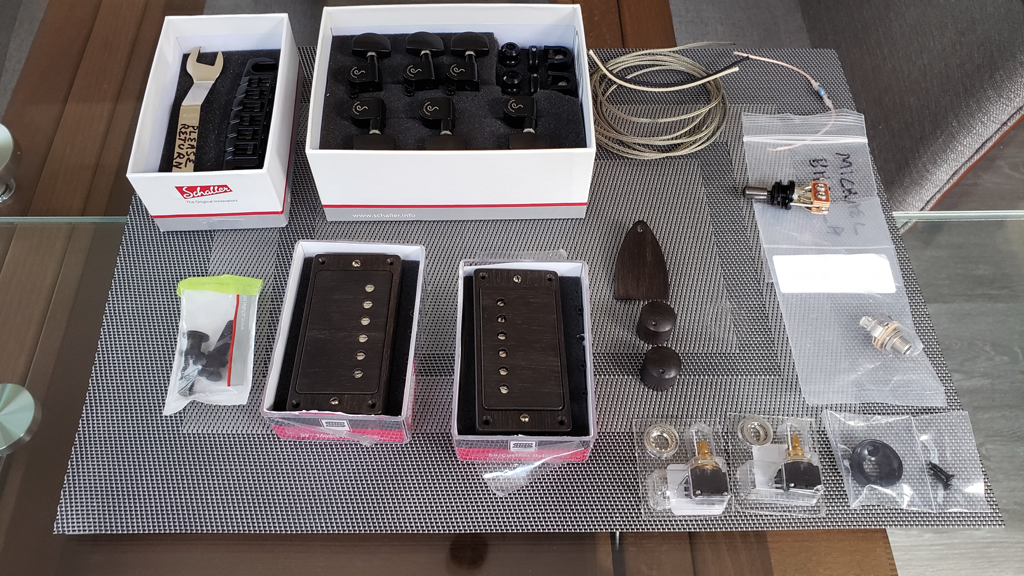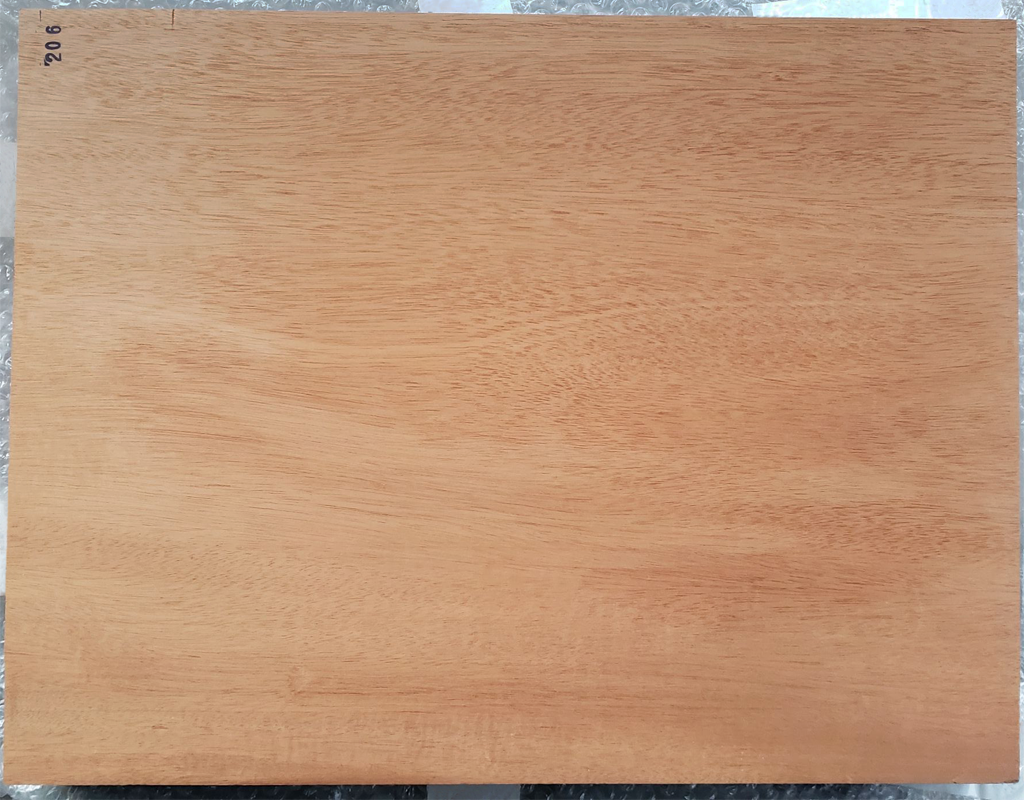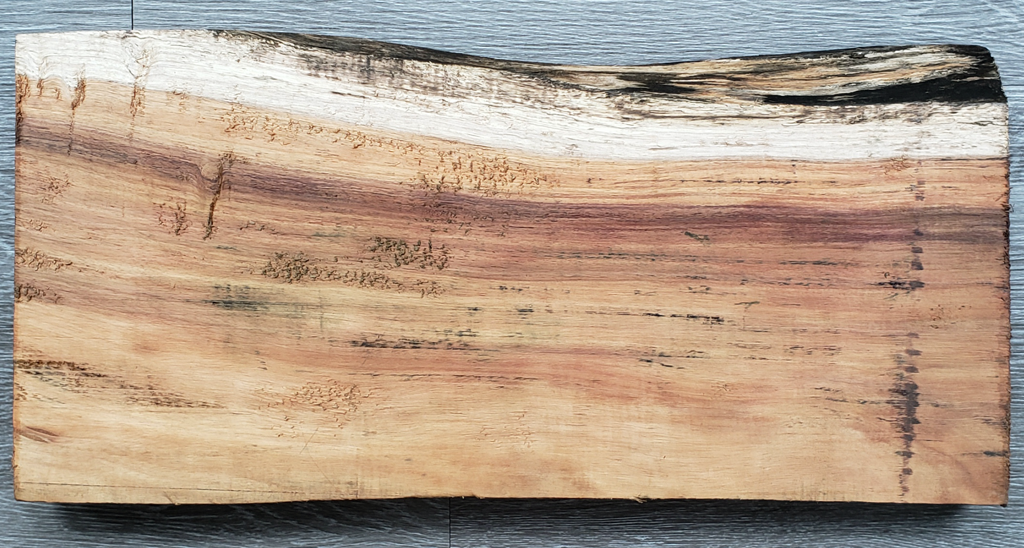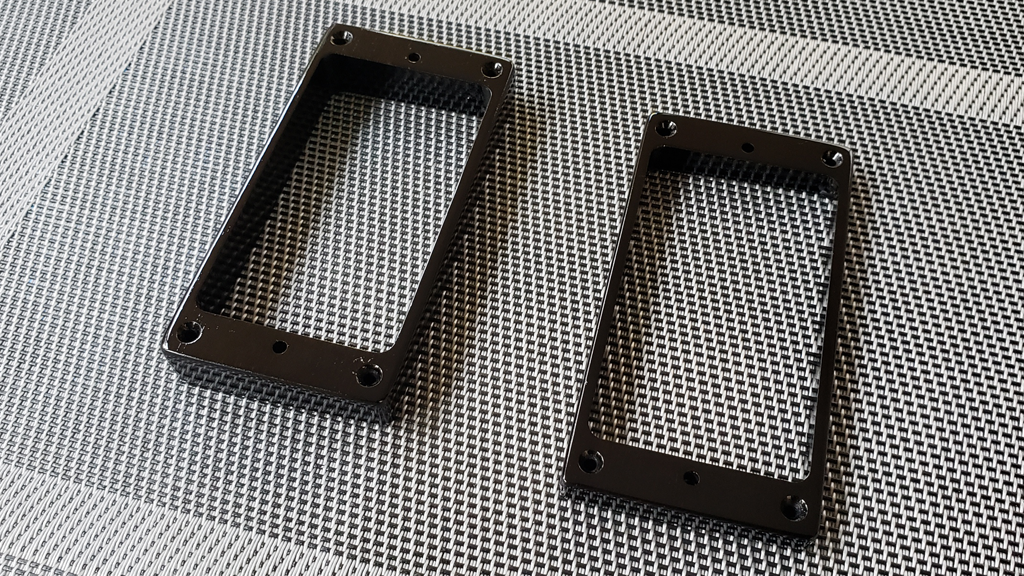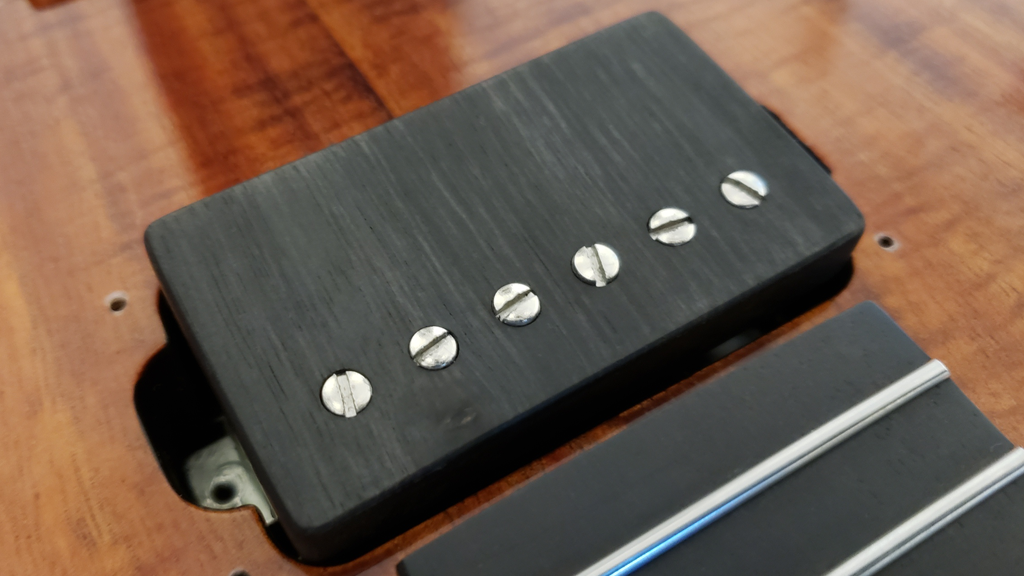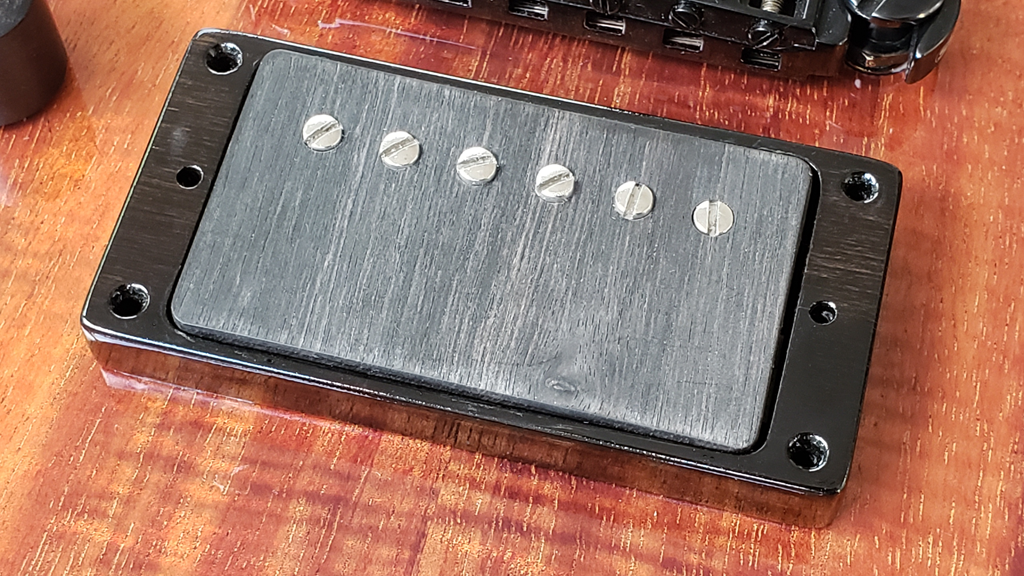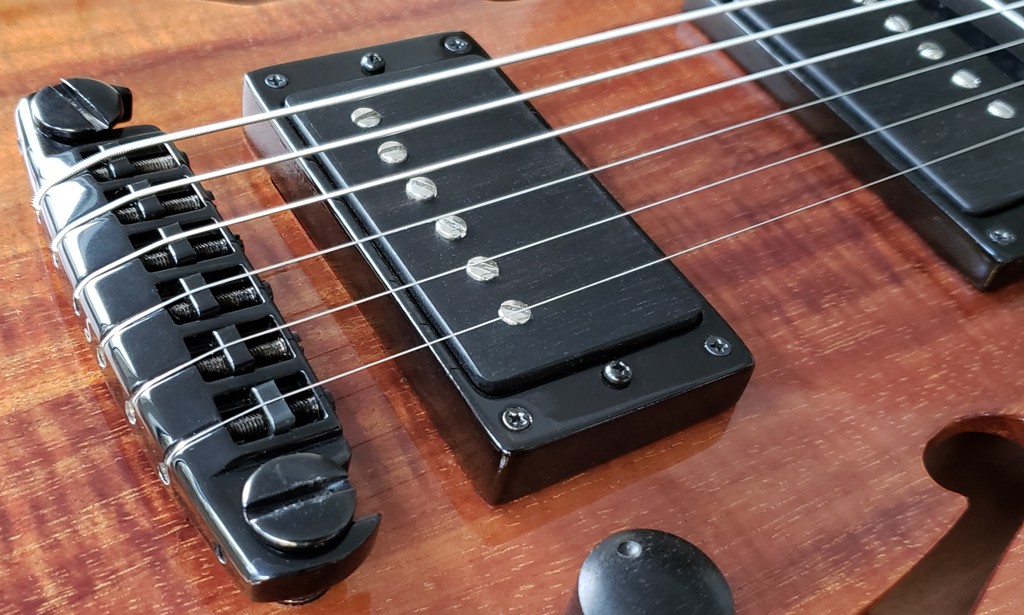aguyinaustintx
Junior Member
- Messages
- 88
Here's the finished guitar and specs:
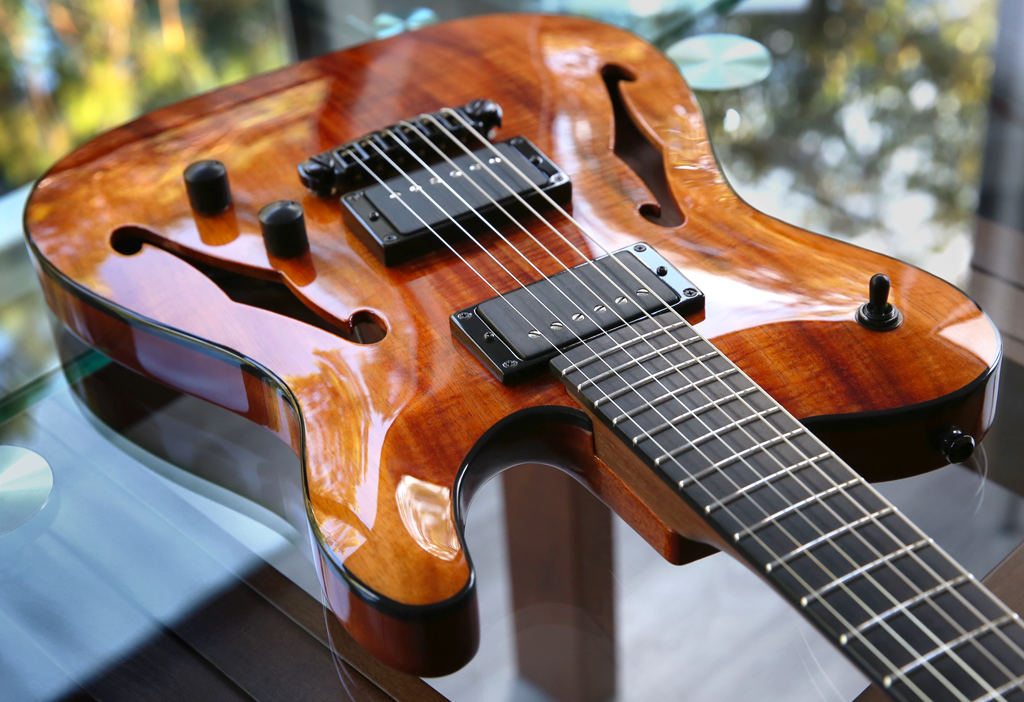
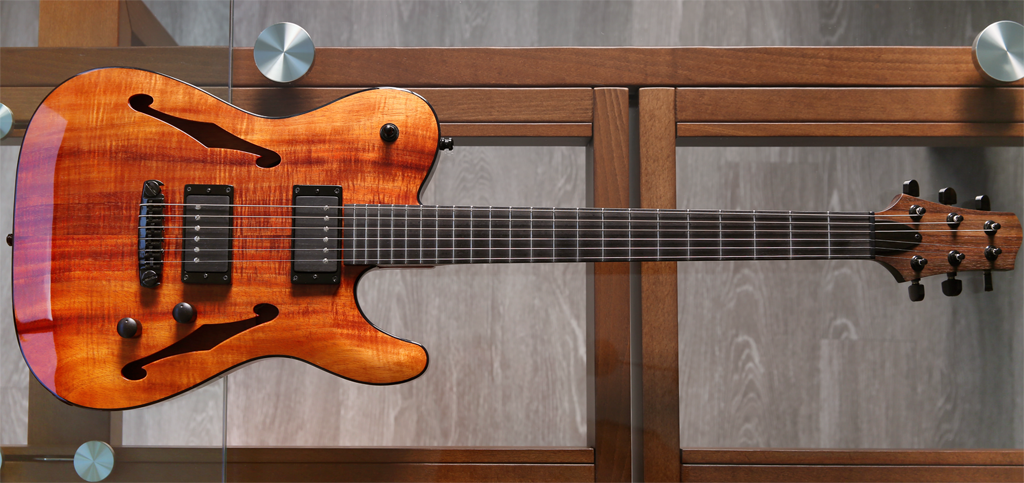
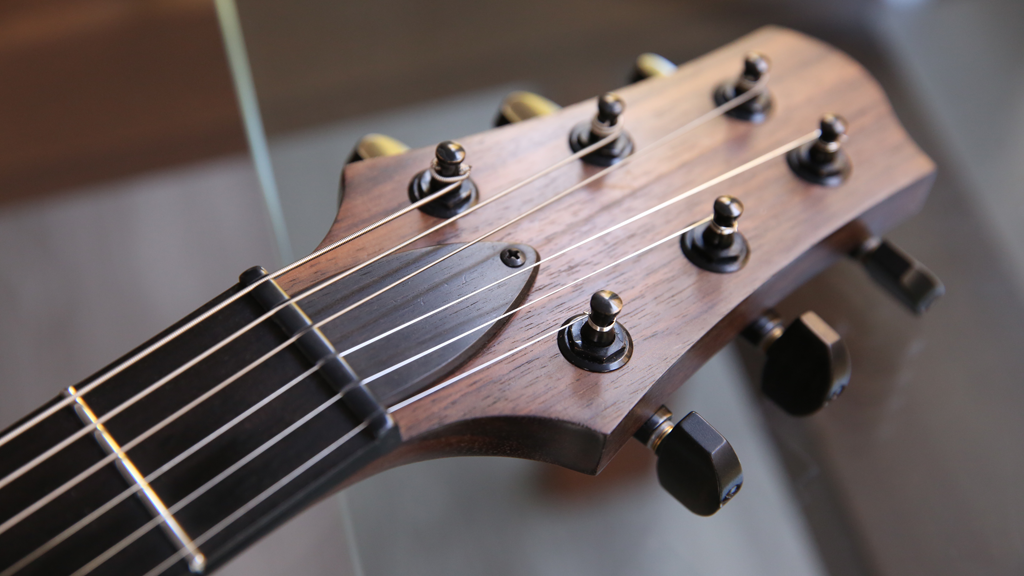
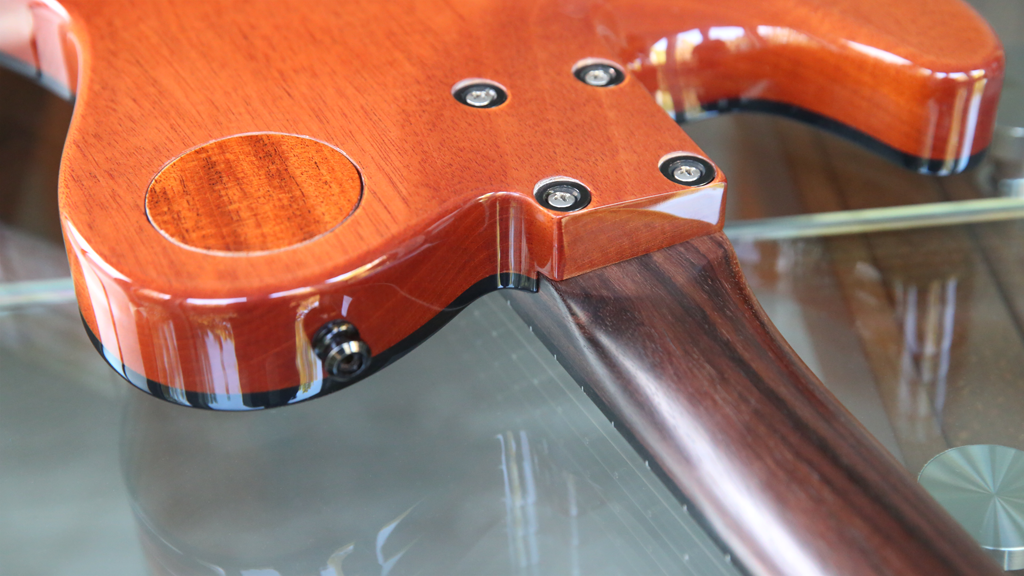
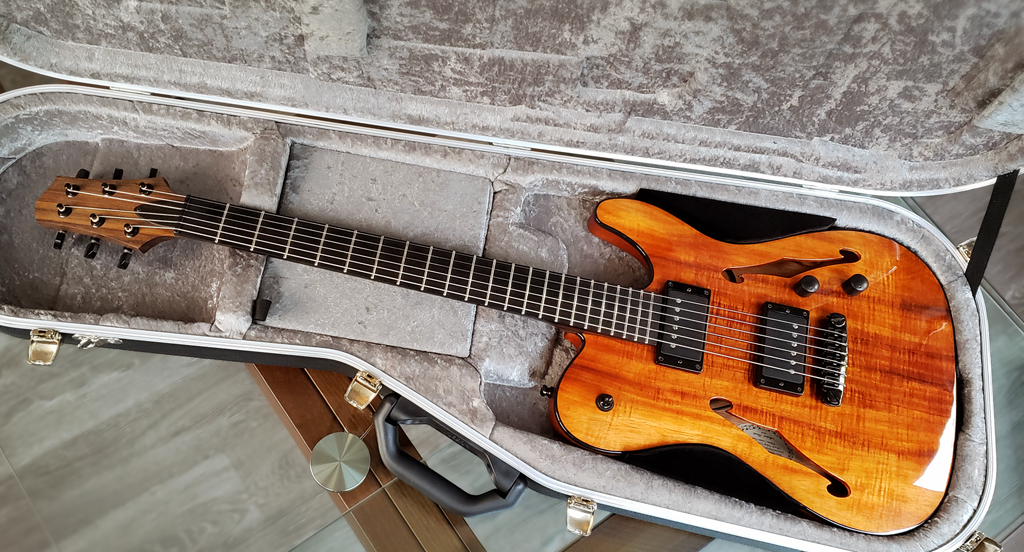
Warmoth Telecaster, Carved Top, Hollow:
Orientation: Right Handed
Customer Supplied Top: Koa (Acacia koa)
Customer Supplied Bottom: Honduran Mahogany (Swietenia macrophylla)
Black Top Binding
Tele Neck Pocket
2 F-Holes
Pickup Rout: Humbucker - X - Humbucker
Controls: (3-Pot CT Tele) Vol - T1 - None
Upper bout 3-way switch rout
Bridge Stud Install: Schaller Signum
7/8" Side Jack Hole
Standard 4 Bolt Mounting Holes, converted to Machine Bolts/Ferrules/Bushings by Wilkins Guitars
Contoured Heel
Warmoth Modern Tilt-back Construction Neck, Vortex:
Indian Rosewood (Dalbergia latifolia)
Indian Ebony (Diospyros melanoxylon) Fretboard, Unique Choice FB3262
Tele Heel
Scale: 25-1/2"
Orientation: Right Handed
Nut Width: 1-11/16"
Neck Profile: Wolfgang
Radius: Straight 12"
Frets: 22
Fret Size: SS6105 (Stainless)
Tuner Ream: Schaller (25/64")
No Inlay
No Side Dots
GraphTech Black TUSQ XL - Standard Nut
Mounting Holes: Standard 4 Bolt
Pickup Selector Switch Cover Plate:
Mahogany with Magnetic Fasteners (Custom)
Dknob.com Custom Parts:
Ebony Humbucker Pickup Covers and Rings
Ebony Dome knobs
Ebony Truss Rod Cover
Ebony 3-Way Switch Tip
Schaller:
Signum Wraparound Bridge (Black)
M-6 3+3 Guitar Machines (Black)
S Locks (Black)
Crazyparts.de:
Ebony M6 Tuner Buttons
SeymourDuncan:
'59 Neck SH-1n Pickup
'59/Custom Hybrid SH-16 Pickup
Circuit:
Bourns 500K Audio Series 95 Potentiometers
0.30 mF Tone Capacitor
Braided Wire
Black 3-way Toggle Switch
Black Electrosocket Jackplate
Pure Tone Output Jack Output Jack
Finish:
Wilkins Guitars
Fret Dress, Nut and Saddle Filing, Setup
Ben Nippes of South Austin Music, his mojo really made it sing
Case:
Hiscox PRO-II-EF-B/S Strat/Tele with Custom Padding, Kaizen Foam and Velvet Flock





Warmoth Telecaster, Carved Top, Hollow:
Orientation: Right Handed
Customer Supplied Top: Koa (Acacia koa)
Customer Supplied Bottom: Honduran Mahogany (Swietenia macrophylla)
Black Top Binding
Tele Neck Pocket
2 F-Holes
Pickup Rout: Humbucker - X - Humbucker
Controls: (3-Pot CT Tele) Vol - T1 - None
Upper bout 3-way switch rout
Bridge Stud Install: Schaller Signum
7/8" Side Jack Hole
Standard 4 Bolt Mounting Holes, converted to Machine Bolts/Ferrules/Bushings by Wilkins Guitars
Contoured Heel
Warmoth Modern Tilt-back Construction Neck, Vortex:
Indian Rosewood (Dalbergia latifolia)
Indian Ebony (Diospyros melanoxylon) Fretboard, Unique Choice FB3262
Tele Heel
Scale: 25-1/2"
Orientation: Right Handed
Nut Width: 1-11/16"
Neck Profile: Wolfgang
Radius: Straight 12"
Frets: 22
Fret Size: SS6105 (Stainless)
Tuner Ream: Schaller (25/64")
No Inlay
No Side Dots
GraphTech Black TUSQ XL - Standard Nut
Mounting Holes: Standard 4 Bolt
Pickup Selector Switch Cover Plate:
Mahogany with Magnetic Fasteners (Custom)
Dknob.com Custom Parts:
Ebony Humbucker Pickup Covers and Rings
Ebony Dome knobs
Ebony Truss Rod Cover
Ebony 3-Way Switch Tip
Schaller:
Signum Wraparound Bridge (Black)
M-6 3+3 Guitar Machines (Black)
S Locks (Black)
Crazyparts.de:
Ebony M6 Tuner Buttons
SeymourDuncan:
'59 Neck SH-1n Pickup
'59/Custom Hybrid SH-16 Pickup
Circuit:
Bourns 500K Audio Series 95 Potentiometers
0.30 mF Tone Capacitor
Braided Wire
Black 3-way Toggle Switch
Black Electrosocket Jackplate
Pure Tone Output Jack Output Jack
Finish:
Wilkins Guitars
Fret Dress, Nut and Saddle Filing, Setup
Ben Nippes of South Austin Music, his mojo really made it sing
Case:
Hiscox PRO-II-EF-B/S Strat/Tele with Custom Padding, Kaizen Foam and Velvet Flock


